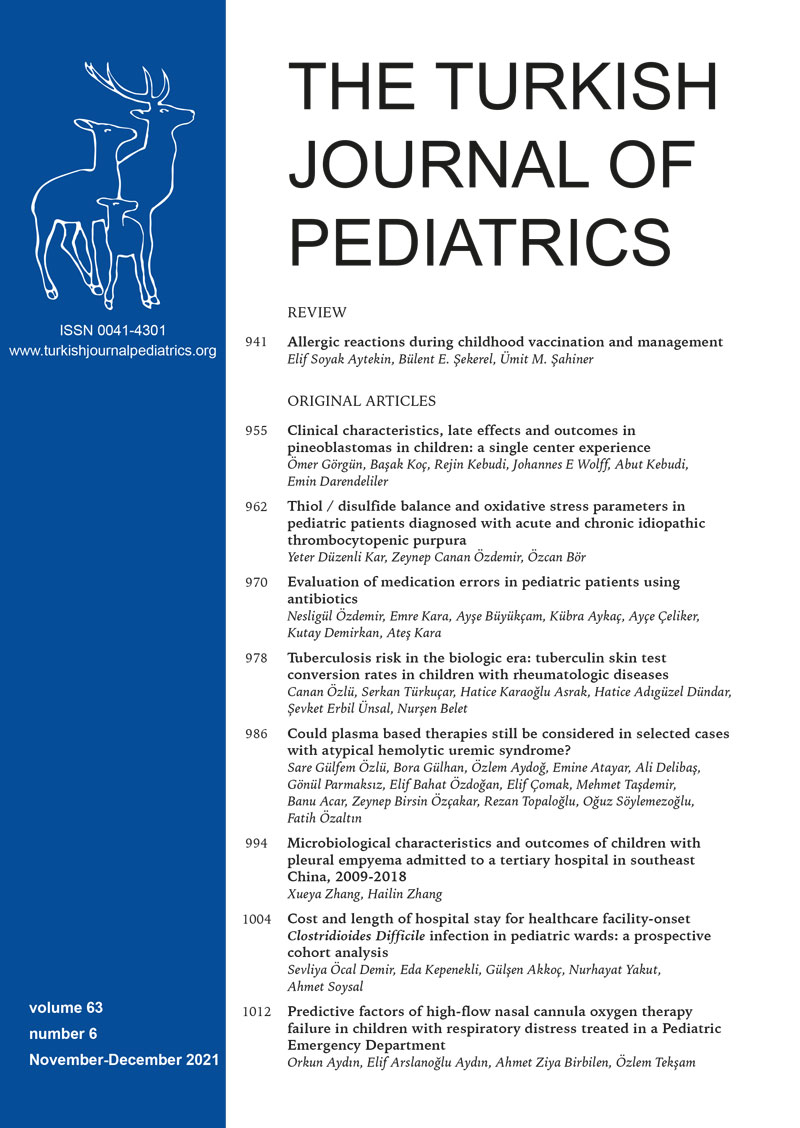Abstract
Background. Pineoblastomas (PB) are rare tumors of the central nervous system and are more common in children. There is no consensus about standard of care. The objective of this study is to analyze the outcome of children with PB.
Methods. Six patients with PB who were diagnosed between 1990-2012 were evaluated retrospectively. Demographics, age of diagnosis, first complaint, tumor region, diagnosis type, seeding metastasis to the spinal axis or cerebrospinal fluid (CSF), treatment and survival of these patients were recorded.
Results. Three patients had subtotal resection and all patients received chemotherapy and craniospinal irradiation (CSI) after diagnosis. Median follow-up after treatment was 5.5 (range:1-19) years. Two patients are alive with no evidence of disease for 7.5 and 10 years, one of whom was diagnosed with papillary thyroid carcinoma 9.5 years after treatment. One of the patients who died had lived for 19 years after diagnosis.
Conclusions. Pineoblastomas are rare but very aggressive tumors; more effective treatment strategies are needed. Survivors should be followed up for late effects such as second malignancies and endocrine deficiencies.
Keywords: children, late effects, pineoblastoma
Copyright and license
Copyright © 2021 The Author(s). This is an open access article distributed under the Creative Commons Attribution License (CC BY), which permits unrestricted use, distribution, and reproduction in any medium or format, provided the original work is properly cited.














